Trivia Browser

subdirectory_arrow_right Sonic & Knuckles (Game)
▲
1
▼
 The game was meant to be longer, but due to time constraints, the high manufacturing costs of a 34 megabit cartridge with NVRAM, and Sega's commitment to a major McDonald's Happy Meal promotion featuring a sweepstakes to win a copy of the game, the decision was made to split the game into two games, Sonic the Hedgehog 3, and Sonic & Knuckles. Evidence of this split can be found in the level select menu (sound test), where levels from the second game (such as Flying Battery, Mushroom Vally, and Sandopolis) can be found.
The game was meant to be longer, but due to time constraints, the high manufacturing costs of a 34 megabit cartridge with NVRAM, and Sega's commitment to a major McDonald's Happy Meal promotion featuring a sweepstakes to win a copy of the game, the decision was made to split the game into two games, Sonic the Hedgehog 3, and Sonic & Knuckles. Evidence of this split can be found in the level select menu (sound test), where levels from the second game (such as Flying Battery, Mushroom Vally, and Sandopolis) can be found.
Game Informer article:
https://www.gameinformer.com/b/features/archive/2016/10/10/how-sonic-the-hedgehog-3-became-two-games-sonic-and-knuckles-lock-on-technology.aspx
McDonald's Sonic the Hedgehog 3 Happy Meal sweepstakes commercial:
https://www.youtube.com/watch?v=X4z6S6SErYA
Wikipedia article:
http://en.wikipedia.org/wiki/Sonic_the_Hedgehog_3#Development
https://www.gameinformer.com/b/features/archive/2016/10/10/how-sonic-the-hedgehog-3-became-two-games-sonic-and-knuckles-lock-on-technology.aspx
McDonald's Sonic the Hedgehog 3 Happy Meal sweepstakes commercial:
https://www.youtube.com/watch?v=X4z6S6SErYA
Wikipedia article:
http://en.wikipedia.org/wiki/Sonic_the_Hedgehog_3#Development

▲
1
▼
In a 1993 interview with the game's planner Hiroaki Chino in issue no. 7 of Marukatsu Mega Drive, he was asked what the biggest changes were in Sonic CD compared to past games that were released on cartridges? He responded:
"One place in particular where you feel the difference is the special stage. We used the Mega CD’s sprite rotation abilities for that. Also, a single regular stage will have past, present, and future to contend with… we could only bring that volume to life with the CD format—if you do a simple comparison with Sonic 2, it’s 3x the volume. But when you add in the secrets and other things, overall, I think it’s safe to say it has about 4x the volume."
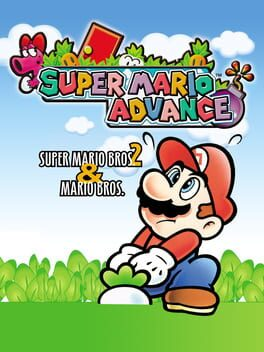
▲
1
▼
 Super Mario Advance was a launch title for the Game Boy Advance and opens with a short cutscene featuring the playable characters walking and pulling up the game's logo from the ground. The cutscene features them walking in a small lit square, with the rest of the screen being dimmed until the characters are in place to start pulling up the logo, when the borders slowly brighten. The resolution of the bright square is 160x144 pixels, the screen resolution of the original Game Boy and Game Boy Color, with the fade-in meant to demonstrate the increased resolution of the Game Boy Advance.
Super Mario Advance was a launch title for the Game Boy Advance and opens with a short cutscene featuring the playable characters walking and pulling up the game's logo from the ground. The cutscene features them walking in a small lit square, with the rest of the screen being dimmed until the characters are in place to start pulling up the logo, when the borders slowly brighten. The resolution of the bright square is 160x144 pixels, the screen resolution of the original Game Boy and Game Boy Color, with the fade-in meant to demonstrate the increased resolution of the Game Boy Advance.
Platform: Sega Mega Drive/Genesis
▲
2
▼
"Blast processing" is a marketing term coined by Sega of America to promote the Sega Genesis as the cooler and more powerful console compared to the SNES. It was such an effective campaign that it caused Nintendo to spend millions of dollars to ramp up their own smear campaign to rebut the claims, helping to create the textbook example of a "console war" between two rivaling video game companies through aggressive marketing and advertising. It is true that Blast processing as presented in advertisements at the time does not exist in any released Genesis game, but its creation was based on a real, low-level progressive processing method that ultimately went unused by developers.
The basic idea is that the hardware's video processor is "blasted" continuously, with the Genesis' 68000 processor working flat-out to change the color of every individual pixel during an active scan, a process where the "guns" on a CRT screen move from left to right and then down to the next line and so on. It was believed at the time that this function could be used to increase the Genesis' somewhat constrained color palette to showcase 256 color static images if timed right (this number would be exceeded by other developers like Jon Burton from Traveller's Tales who later discovered the trick).
Sega of America Senior Producer Scott Bayless claimed that Sega technical director Marty Franz first discovered the trick by "hooking the scan line interrupt and firing off a DMA [direct memory access] at just the right time", as firing it off at the wrong time would result in the scan lines appearing out of phase. This timing/synchronization issue, on top of the more pressing issue of the feature using all of the 68000's CPU time (meaning that while you could run the feature, you couldn't actually play the games that use it), effectively made it useless for cartridge games, and no shipped Genesis games ever used the feature. It’s speculated that it could have been used for Sega CD games, as the add-on had its own CPU that could run the feature, but this also did not come to pass.
The people responsible for the name "Blast processing" are Bayless and Sega of America's PR team. They interviewed him about the specs of the console, and he described to them how the feature could "blast data into the DAC's [digital-to-audio converters]". When talking about how the name came about, he assumed the PR team just liked the word "blast" without understanding what Bayless was explaining, and Blast processing was invented by them to more easily and vaguely sum up the technical capabilities of the Genesis when marketing it. Bayless later expressed reservations about the phrase, calling it "ghastly".
It should also be noted that this feature was not exclusive to the Genesis. In 2020, former Sculptured Software programmer Jeff Peters claimed that they discovered a similar technical trick on the SNES before Sega started using the phrase, but it was focused on audio rather than graphics. He claims that when porting Mortal Kombat to the SNES, Sculptured Software encountered an issue where the amount of graphics data being put onto the cartridge meant that sound had to be cut back drastically. To overcome this problem, Peters and his team used a homegrown system which allowed them to read sounds from the cartridge one at a time and blast them directly to a buffer in the sound memory. While the two tricks were achieving different things, it's interesting to note that both were possible on either console, despite Sega's insistence that only the Genesis could achieve Blast processing.
The basic idea is that the hardware's video processor is "blasted" continuously, with the Genesis' 68000 processor working flat-out to change the color of every individual pixel during an active scan, a process where the "guns" on a CRT screen move from left to right and then down to the next line and so on. It was believed at the time that this function could be used to increase the Genesis' somewhat constrained color palette to showcase 256 color static images if timed right (this number would be exceeded by other developers like Jon Burton from Traveller's Tales who later discovered the trick).
Sega of America Senior Producer Scott Bayless claimed that Sega technical director Marty Franz first discovered the trick by "hooking the scan line interrupt and firing off a DMA [direct memory access] at just the right time", as firing it off at the wrong time would result in the scan lines appearing out of phase. This timing/synchronization issue, on top of the more pressing issue of the feature using all of the 68000's CPU time (meaning that while you could run the feature, you couldn't actually play the games that use it), effectively made it useless for cartridge games, and no shipped Genesis games ever used the feature. It’s speculated that it could have been used for Sega CD games, as the add-on had its own CPU that could run the feature, but this also did not come to pass.
The people responsible for the name "Blast processing" are Bayless and Sega of America's PR team. They interviewed him about the specs of the console, and he described to them how the feature could "blast data into the DAC's [digital-to-audio converters]". When talking about how the name came about, he assumed the PR team just liked the word "blast" without understanding what Bayless was explaining, and Blast processing was invented by them to more easily and vaguely sum up the technical capabilities of the Genesis when marketing it. Bayless later expressed reservations about the phrase, calling it "ghastly".
It should also be noted that this feature was not exclusive to the Genesis. In 2020, former Sculptured Software programmer Jeff Peters claimed that they discovered a similar technical trick on the SNES before Sega started using the phrase, but it was focused on audio rather than graphics. He claims that when porting Mortal Kombat to the SNES, Sculptured Software encountered an issue where the amount of graphics data being put onto the cartridge meant that sound had to be cut back drastically. To overcome this problem, Peters and his team used a homegrown system which allowed them to read sounds from the cartridge one at a time and blast them directly to a buffer in the sound memory. While the two tricks were achieving different things, it's interesting to note that both were possible on either console, despite Sega's insistence that only the Genesis could achieve Blast processing.
https://www.eurogamer.net/digitalfoundry-2019-blast-processing-retro-analysis
https://www.youtube.com/watch?v=o8qgArSqMsc
https://www.timeextension.com/news/2022/09/the-man-behind-segas-blast-processing-gimmick-is-sorry-for-creating-that-ghastly-phrase
https://www.nintendolife.com/news/2020/05/segas_blast_processing_we_did_it_on_the_snes_first_says_former_sculptured_software_dev
https://www.youtube.com/watch?v=o8qgArSqMsc
https://www.timeextension.com/news/2022/09/the-man-behind-segas-blast-processing-gimmick-is-sorry-for-creating-that-ghastly-phrase
https://www.nintendolife.com/news/2020/05/segas_blast_processing_we_did_it_on_the_snes_first_says_former_sculptured_software_dev

▲
1
▼
Star Fox Composer Hajime Hirasawa left Nintendo shortly after the game released and six years later founded Faith Co. Ltd, the company that developed the world's first downloadable ringtones.
Faith Co. Ltd company history:
https://www.faith-inc.com/corporate/faith/history/index.html
Faith Co. Ltd press release from 2007 verifying Hirasawa was still president:
https://www.faith-inc.com/press/doc/20070820desperado_nfrm.html
MobyGames listing:
https://www.mobygames.com/person/82535/hajime-hirasawa/
Multiple sources included above as no single valid English sources are available to correlate the founder of Faith Co. Ltd. as being the same man who composed Star Fox for SNES.
https://www.faith-inc.com/corporate/faith/history/index.html
Faith Co. Ltd press release from 2007 verifying Hirasawa was still president:
https://www.faith-inc.com/press/doc/20070820desperado_nfrm.html
MobyGames listing:
https://www.mobygames.com/person/82535/hajime-hirasawa/
Multiple sources included above as no single valid English sources are available to correlate the founder of Faith Co. Ltd. as being the same man who composed Star Fox for SNES.
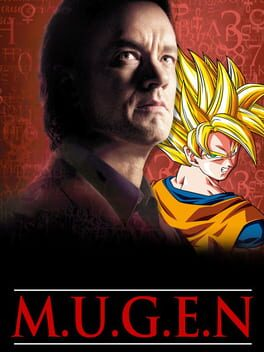
▲
1
▼
M.U.G.E.N was originally intended as an engine for shooting games, however, it was changed to a fighting game engine due to a low amount of quality fighting games being available on PC at the time.
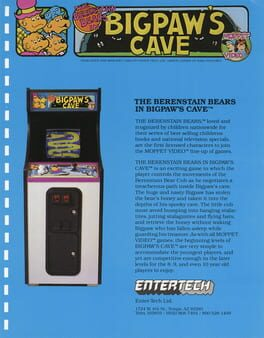
▲
1
▼
 Owing to its elusive rarity, obscurity, and existence within the very small collector niche of pre-school entertainment, Berenstain Bears in Big Paw's Cave has not been properly archived for emulators. Every piece of video footage of the game online shows the game as taking place on a black background, giving it a resemblance to games from much earlier points in arcade history, while the flyer for the game shows a much more colorful backdrop with more details.
Owing to its elusive rarity, obscurity, and existence within the very small collector niche of pre-school entertainment, Berenstain Bears in Big Paw's Cave has not been properly archived for emulators. Every piece of video footage of the game online shows the game as taking place on a black background, giving it a resemblance to games from much earlier points in arcade history, while the flyer for the game shows a much more colorful backdrop with more details.
Platform: Nintendo GameCube
▲
6
▼
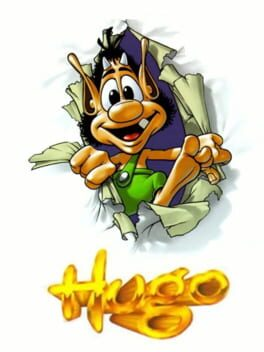
▲
1
▼
Hugo was originally the subject of a Danish game show where children would call the TV station airing it and be able to control the character by pressing numbers on the phone, almost like a prototypical form of game streaming. The TV version ran on two Amiga computers, one that would process the game and another that would convert the phone dials into inputs.

▲
2
▼
When the PlayStation 2 was revealed in Japan, a demo was shown off of a fountain of spark particles. When this demo was shown to Jon Burton, founder of Traveller's Tales, he coded an identical tech demo for the first PlayStation as a joke. This tech demo would ultimately end up in the files of Toy Story 2: Buzz Lightyear to the Rescue!, unused, by accident.
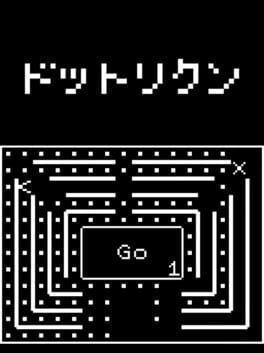
▲
3
▼
Dottori-Kun, a 1991 demake of Sega's 1979 maze game Head-On, was created not to be played, but rather as a legal loophole around Japan's Electrical Appliance and Material Control Law which claimed that all arcade machines must contain a game when sold. Dottori-Kun allowed Sega to sell generic Astro City arcade machines which the arcade owner could swap the contents of at their leisure, and included test features to ensure the machine worked properly before installing a proper game. The game did not support coin insertion, and therefore was not a viable option for arcades even if an owner believed there was an audience for its simplistic gameplay and graphics, leading to the board being scrapped most of the time.
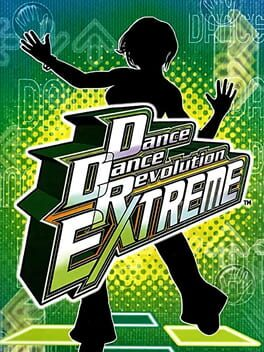
subdirectory_arrow_right Dance Dance Revolution X2 (Game)
▲
1
▼
By reaching an ENJOY LEVEL of 120 in Dance Dance Revolution X2, a new Challenge Chart is unlocked for the Dance Dance Revolution Extreme Song "bag". While it appears identical to the Expert Chart, every triplet (12th, 24th, 48th note) step is rounded to the nearest 64th note, making it harder to time. This references how, in its debut game of Extreme, triplet notes were improperly quantized due to hardware limitations, further exacerbated by "bag"'s BPM of only 65. The Expert Chart's timing was previously corrected in Dance Dance Revolution X.
RemyWiki Page for bag:
https://remywiki.com/Bag
Video of bag's Expert Chart (corrected):
https://www.youtube.com/watch?v=84tamss2LqI
Video of bag's Challenge Chart (contains quantization errors):
https://www.youtube.com/watch?v=0y3X6IIzD1k
Comparison of the two charts:
https://www.youtube.com/watch?v=wwaHC0dhgJ8#t=988
https://remywiki.com/Bag
Video of bag's Expert Chart (corrected):
https://www.youtube.com/watch?v=84tamss2LqI
Video of bag's Challenge Chart (contains quantization errors):
https://www.youtube.com/watch?v=0y3X6IIzD1k
Comparison of the two charts:
https://www.youtube.com/watch?v=wwaHC0dhgJ8#t=988
Platform: Pokémon mini
▲
3
▼
The Pokémon Mini is the only Nintendo handheld to have a rumble motor stored inside the console itself, instead of through an accessory, removable controller, or unique game cartridge.

subdirectory_arrow_right Scooby-Doo! Night of 100 Frights (Game)
▲
1
▼
Inside the files of SpongeBob SquarePants: Battle for Bikini Bottom, you can find a video from Scooby-Doo! Night of 100 Frights, an earlier game by the same studio, Heavy Iron. It is unknown if this is a leftover from building Bikini Bottom off of 100 Frights' engine, or a cross-promotion that was veto'd by either Warner Bros. or Nickelodeon.
What some may find more interesting, however, is a now-deleted YouTube upload of the unused cutscene colloquially known as the "Cursed YouTube Video" which was based on a corrupted video file and as such featured disorientating, lagging sound; an inaccurate timer for video length; visuals that cut out; and a buffer that would begin at an exact point and continually play regardless of the viewer's internet speed.
What some may find more interesting, however, is a now-deleted YouTube upload of the unused cutscene colloquially known as the "Cursed YouTube Video" which was based on a corrupted video file and as such featured disorientating, lagging sound; an inaccurate timer for video length; visuals that cut out; and a buffer that would begin at an exact point and continually play regardless of the viewer's internet speed.
Article on the "cursed" upload:
https://boingboing.net/2019/06/13/cursed-youtube-video.html
Replica video, albeit with multiple glitches fixed:
https://youtu.be/ieP4C6BkphY
https://boingboing.net/2019/06/13/cursed-youtube-video.html
Replica video, albeit with multiple glitches fixed:
https://youtu.be/ieP4C6BkphY
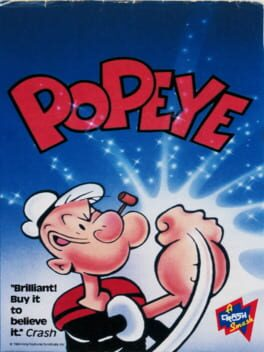
▲
1
▼
The ZX Spectrum Popeye game contains exceptionally large and detailed character sprites, a first for the ZX Spectrum. After being requested by copyright holder King Features for the game's graphics to resemble Thimble Theatre comics as closely as possible, programmer Don Priestley designed these graphics by making sets of square sprites and attaching them together. This technique would be reused for other games by the same programmer, including Benny Hill's Madcap Chase and The Trap Door, both based on British TV IPs that may have had similar stipulations.
Platform: PlayStation
subdirectory_arrow_right Sega Mega Drive/Genesis (Platform), Nintendo Entertainment System (Platform), Neo Geo AES (Platform), Game Boy Color (Platform), Arcade (Platform), Sega Master System/Mark III (Platform), Super Nintendo Entertainment System (Platform), Game Boy (Platform), Game Boy Advance (Platform), Sega Game Gear (Platform)
▲
1
▼
 In 2018, rapper Soulja Boy attempted to sell his own line of video game consoles, collectively called the SouljaGame line, sold for $149.99 for a console and $99.99 for a handheld. Advertising claimed that the consoles would be compatible with a variety of consoles' games, including modern platforms like the PlayStation Vita, Nintendo 3DS, and Nintendo Switch. These, quite obviously, did not have such compatibility, but rather were a generic retro emulator console one could find on small business-oriented retail websites such as Wish and AliExpress loaded with pirated and modified games from the Neo Geo; NES; Game Boy Advance; Game Boy Color; Game Boy; Sega Genesis; SNES; Master System; Game Gear; and PlayStation libraries sold at a markup. The only difference from these pre-existing consoles being a photograph of Soulja printed onto the box. Soulja Boy would eventually stop selling SouljaGame consoles, with the website for the console redirecting to Nintendo's 3DS website.
In 2018, rapper Soulja Boy attempted to sell his own line of video game consoles, collectively called the SouljaGame line, sold for $149.99 for a console and $99.99 for a handheld. Advertising claimed that the consoles would be compatible with a variety of consoles' games, including modern platforms like the PlayStation Vita, Nintendo 3DS, and Nintendo Switch. These, quite obviously, did not have such compatibility, but rather were a generic retro emulator console one could find on small business-oriented retail websites such as Wish and AliExpress loaded with pirated and modified games from the Neo Geo; NES; Game Boy Advance; Game Boy Color; Game Boy; Sega Genesis; SNES; Master System; Game Gear; and PlayStation libraries sold at a markup. The only difference from these pre-existing consoles being a photograph of Soulja printed onto the box. Soulja Boy would eventually stop selling SouljaGame consoles, with the website for the console redirecting to Nintendo's 3DS website.
Soulja Boy selling SouljaGame line article:
https://variety.com/2018/gaming/news/soulja-boy-selling-cheap-consoles-1203084022/
Soulja Boy ends sales of SouljaGame line article:
https://www.ign.com/articles/2019/01/02/soulja-boy-stops-selling-souljagame-game-consoles
SouljaGame unboxing and teardown showing the packaging:
https://www.youtube.com/watch?v=fo-qNU7Qu3k
Rerez video reviewing the console SouljaGame was based on, showing the console list:
https://www.youtube.com/watch?v=ZqXuAuTFXpA#t=595
https://variety.com/2018/gaming/news/soulja-boy-selling-cheap-consoles-1203084022/
Soulja Boy ends sales of SouljaGame line article:
https://www.ign.com/articles/2019/01/02/soulja-boy-stops-selling-souljagame-game-consoles
SouljaGame unboxing and teardown showing the packaging:
https://www.youtube.com/watch?v=fo-qNU7Qu3k
Rerez video reviewing the console SouljaGame was based on, showing the console list:
https://www.youtube.com/watch?v=ZqXuAuTFXpA#t=595
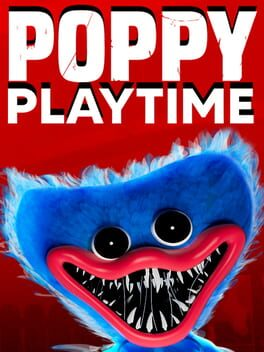
This trivia has been marked as "Not Safe for Work".
It may not be appropriate for all visitors and definitely isn't appropriate for work or school environments.
Click here to unhide it.
It may not be appropriate for all visitors and definitely isn't appropriate for work or school environments.
Click here to unhide it.
▲
1
▼
Both sources are in Spanish and have been machine-translated to English by the User:
Uruguay incident:
https://www.elobservador.com.uy/nota/poppy-playtime-primaria-llama-a-estar-alerta-ante-aumento-de-casos-de-cortes-en-ninos-2022915164831
Translation: "The general director of Primary, Graciela Fabeyro, called on the population to be “alert” about the manifestation of the children, or their behavior, after El Observador reported this Thursday that two schoolchildren were hospitalized for playing a game that incites them. to self-harm, based on the video game Poppy Playyime and her character Huggy Wuggy.
“The most serious cases were two,” Fabeyro acknowledged, but there were seven who did this practice.
He reported that games or attempts to attack or self-harm occur “more frequently than they did before the pandemic.” And he added: “The pandemic has also installed some mental health issues.” Primary contacted the Ministry of Public Health about these cases, with the aim of promoting actions aimed at children.
“Some situations are occurring in childhood,” said the leader, although she preferred not to give more details, when consulted by the press this Thursday. “We still have no explanations. This is multi-causal. “We are more alert, the situation is known and reported more,” she indicated.
Fabeyro asked the population to pay attention to the behavior of the schoolchildren. “I repeat, (we must) all be alert, because sometimes we don't realize it. We think that they are games, or that children feel uncomfortable when they say: I don't like that thing, I don't want to live or I have some difficulty. One sometimes takes it as game situations. (You have to) be alert because it is occurring in greater quantities. We receive different situations, not only in Montevideo and the metropolitan area, but in other places in the country,” he expressed."
Pablo Abdala's response:
https://www.elobservador.com.uy/nota/presidente-de-inau-preocupado-por-episodio-sobre-huggy-wuggy-confirma-que-el-desarrollo-tecnologico-entrana-un-riesgo-muy-severo--202291685022
Translation: "The president of the Institute for Children and Adolescents of Uruguay (INAU), Pablo Abdala, expressed his concern about the video game Poppy Playtime and the main character, Huggy Wuggy. This horror video game caused seven Uruguayan children to self-harm, and two of them even ended up hospitalized.
“We live in a more violent society, particularly in relation to the youngest and I think that this episode, which surprises and impacts us all greatly, should help us reflect,” said the leader.
In this sense, he emphasized that we must “extreme efforts to care for our children” and “prevent them from falling into the networks of this type of complex practices, which someone irresponsibly encourages or implements,” according to Telenoche.
In his opinion, this episode "is confirmation" that technological development, social networks and increasingly early access by children to different devices "in itself is an advance of modernity, but at the same time entails a very severe risk."
However, Poppy Playtime is not the first game of its kind. In Uruguay there have already been cases of recreational activities that end with children in critical situations.
Such is the case of Ballena Azul: the challenge established 50 challenges to be completed in 50 days and caused fear around the world, since the last task is for the user to commit suicide.
In Uruguay, psychologists warned parents so that they could build trust with their children in order to prevent them from participating in this game.
The situation forced the Ministry of Public Health (MSP) to issue recommendations and register cases of adolescents hospitalized in five departments. At one point, it required the attention of four ministries —Defense, Education, Interior and Health—and the Minister of the Interior at the time, Eduardo Bonomi, even referred a case to Interpol.
On the other hand, the second game that raised alarms was Momo. This viral challenge involved writing to an unknown number through WhatsApp, which eventually “responded with violent and aggressive images” and even with “threats and revealing personal information,” according to the Computer Crime Investigation Unit of the Prosecutor's Office. General of the State of Tabasco, in Mexico (UIDI).
While the latter did not cause as much of a stir as its predecessor, cases were recorded in Brazil, Colombia and Mexico, for example. Like the Blue Whale, it spread quickly through the internet and social networks."
Uruguay incident:
https://www.elobservador.com.uy/nota/poppy-playtime-primaria-llama-a-estar-alerta-ante-aumento-de-casos-de-cortes-en-ninos-2022915164831
Translation: "The general director of Primary, Graciela Fabeyro, called on the population to be “alert” about the manifestation of the children, or their behavior, after El Observador reported this Thursday that two schoolchildren were hospitalized for playing a game that incites them. to self-harm, based on the video game Poppy Playyime and her character Huggy Wuggy.
“The most serious cases were two,” Fabeyro acknowledged, but there were seven who did this practice.
He reported that games or attempts to attack or self-harm occur “more frequently than they did before the pandemic.” And he added: “The pandemic has also installed some mental health issues.” Primary contacted the Ministry of Public Health about these cases, with the aim of promoting actions aimed at children.
“Some situations are occurring in childhood,” said the leader, although she preferred not to give more details, when consulted by the press this Thursday. “We still have no explanations. This is multi-causal. “We are more alert, the situation is known and reported more,” she indicated.
Fabeyro asked the population to pay attention to the behavior of the schoolchildren. “I repeat, (we must) all be alert, because sometimes we don't realize it. We think that they are games, or that children feel uncomfortable when they say: I don't like that thing, I don't want to live or I have some difficulty. One sometimes takes it as game situations. (You have to) be alert because it is occurring in greater quantities. We receive different situations, not only in Montevideo and the metropolitan area, but in other places in the country,” he expressed."
Pablo Abdala's response:
https://www.elobservador.com.uy/nota/presidente-de-inau-preocupado-por-episodio-sobre-huggy-wuggy-confirma-que-el-desarrollo-tecnologico-entrana-un-riesgo-muy-severo--202291685022
Translation: "The president of the Institute for Children and Adolescents of Uruguay (INAU), Pablo Abdala, expressed his concern about the video game Poppy Playtime and the main character, Huggy Wuggy. This horror video game caused seven Uruguayan children to self-harm, and two of them even ended up hospitalized.
“We live in a more violent society, particularly in relation to the youngest and I think that this episode, which surprises and impacts us all greatly, should help us reflect,” said the leader.
In this sense, he emphasized that we must “extreme efforts to care for our children” and “prevent them from falling into the networks of this type of complex practices, which someone irresponsibly encourages or implements,” according to Telenoche.
In his opinion, this episode "is confirmation" that technological development, social networks and increasingly early access by children to different devices "in itself is an advance of modernity, but at the same time entails a very severe risk."
However, Poppy Playtime is not the first game of its kind. In Uruguay there have already been cases of recreational activities that end with children in critical situations.
Such is the case of Ballena Azul: the challenge established 50 challenges to be completed in 50 days and caused fear around the world, since the last task is for the user to commit suicide.
In Uruguay, psychologists warned parents so that they could build trust with their children in order to prevent them from participating in this game.
The situation forced the Ministry of Public Health (MSP) to issue recommendations and register cases of adolescents hospitalized in five departments. At one point, it required the attention of four ministries —Defense, Education, Interior and Health—and the Minister of the Interior at the time, Eduardo Bonomi, even referred a case to Interpol.
On the other hand, the second game that raised alarms was Momo. This viral challenge involved writing to an unknown number through WhatsApp, which eventually “responded with violent and aggressive images” and even with “threats and revealing personal information,” according to the Computer Crime Investigation Unit of the Prosecutor's Office. General of the State of Tabasco, in Mexico (UIDI).
While the latter did not cause as much of a stir as its predecessor, cases were recorded in Brazil, Colombia and Mexico, for example. Like the Blue Whale, it spread quickly through the internet and social networks."

subdirectory_arrow_right Wrecking Crew (Game), Clu Clu Land (Game), Pinball (Game), Gyromite (Game), Hogan's Alley (Game), Golf (Game), Ice Climber (Game), 10-Yard Fight (Game), Stack-up (Game), Excitebike (Game), Baseball (Game), Kung Fu (Game), Tennis (Game), Wild Gunman (Game), Nintendo Entertainment System (Platform), Family Computer (Platform)
▲
2
▼
Multiple early "black box" NES releases' cartridges produced during the console's US launch in Winter 1985 didn't use NES ROM chips, but rather Famicom ROM chips with a built-in converter. The 15 NES launch titles, and the only games known to have these chips, are:
•10-Yard Fight
•Baseball
•Clu Clu Land
•Duck Hunt
•Excitebike
•Golf
•Gyromite
•Hogan's Alley
•Ice Climber
•Kung Fu
•Pinball
•Stack-Up
•Tennis
•Wild Gunman
•Wrecking Crew
All of these games would eventually be reprinted with regular NES chips.
•10-Yard Fight
•Baseball
•Clu Clu Land
•Duck Hunt
•Excitebike
•Golf
•Gyromite
•Hogan's Alley
•Ice Climber
•Kung Fu
•Pinball
•Stack-Up
•Tennis
•Wild Gunman
•Wrecking Crew
All of these games would eventually be reprinted with regular NES chips.
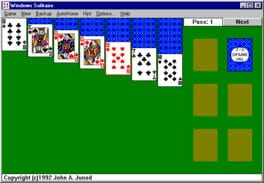
subdirectory_arrow_right PC (Microsoft Windows) (Platform)
▲
2
▼
Solitaire was included on Windows hardware to soothe users unfamiliar with computers by using something familiar that could also introduce them to the functions of a mouse.
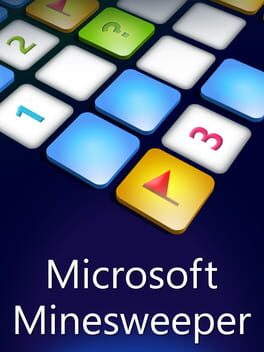
▲
1
▼
Bill Gates became so addicted to Minesweeper that he had to delete it off of his PC to focus on work. He would then go to then-Microsoft president Mike Hallman and borrow his PC when he wanted to play the game, and eventually got a record of 5 seconds. Following this, Microsoft development manager Tom Reeves would cheat at beating Gates' time by building a macro to automatically complete the game. Gates would respond in an email:
"My critical skills are being displaced by a computer. This technology thing is going too far. How can one retain human dignity when computers do the important stuff better than people?"
| keyboard_double_arrow_leftFirst keyboard_arrow_leftPrev | Page 1 of 3 | Nextkeyboard_arrow_right Lastkeyboard_double_arrow_right |
